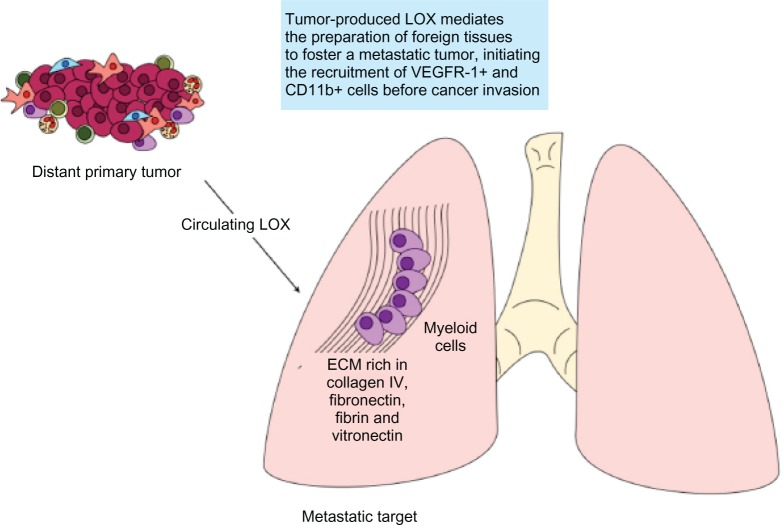Figure 3.
The premetastatic niche.
Notes: Hypoxic cancer cells produce high levels of secreted LOX that mediates the remodeling of ECM at distant sites of future metastasis, resulting in the attraction of CD11b+ myeloid cells. These stromal cells produce matrix metalloproteinases, urokinase, kallikrein-related peptidases, and cathepsins, which can cleave collagen and other ECM proteins initiating a typical cancer-associated process of ECM destruction and deposition. These alterations create a chemoattractive niche for circulating cancer cells and the ECM remodeling enhances metastatic efficiency by enhancing cell-matrix adhesion and tumor cell proliferation. One unresolved question is the anatomic specificity of LOX mediated premetastatic niche formation. This may be explained by different extracellular matrix components present in organs and different tumor tissues; cancers of the lung, breast, ovary, colon, and liver, among others, are all different regarding ECM components such as fibrin, collagen (different types), vitronectin, fibronectin, laminin, etc.
Abbreviations: ECM, extracellular matrix; KLK, kallikrein-related peptidases; LOX, lysyl oxidase; VEGFR, vascular endothelial growth factor receptors.

